Wrist into
- 8 carpal bones
- Act as a “spacer” between the forearm and the hand
2 primary articulations
- Radiocarpal joints
- Midcarpal joints
Terminology / directional terms
- Palmar & volar = anterior
- Dorsal = posterior
Osteology
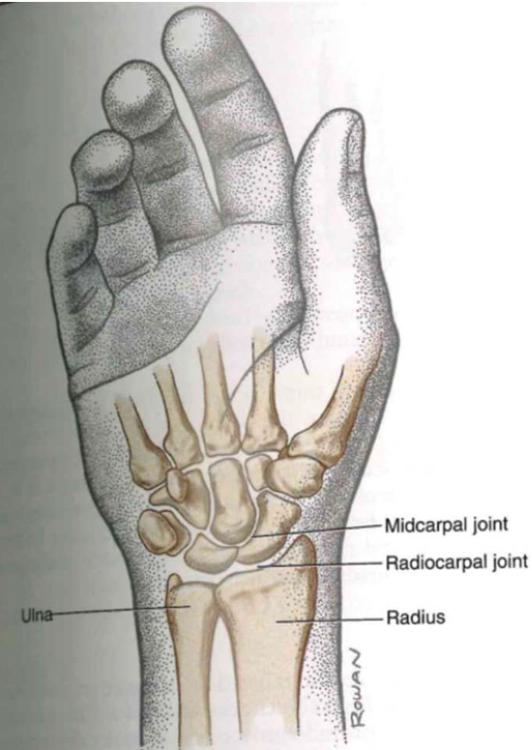
- Distal forearm
- Carpal bones
- Carpal tunnel
Osteology: Distal Forearm
DORSAL
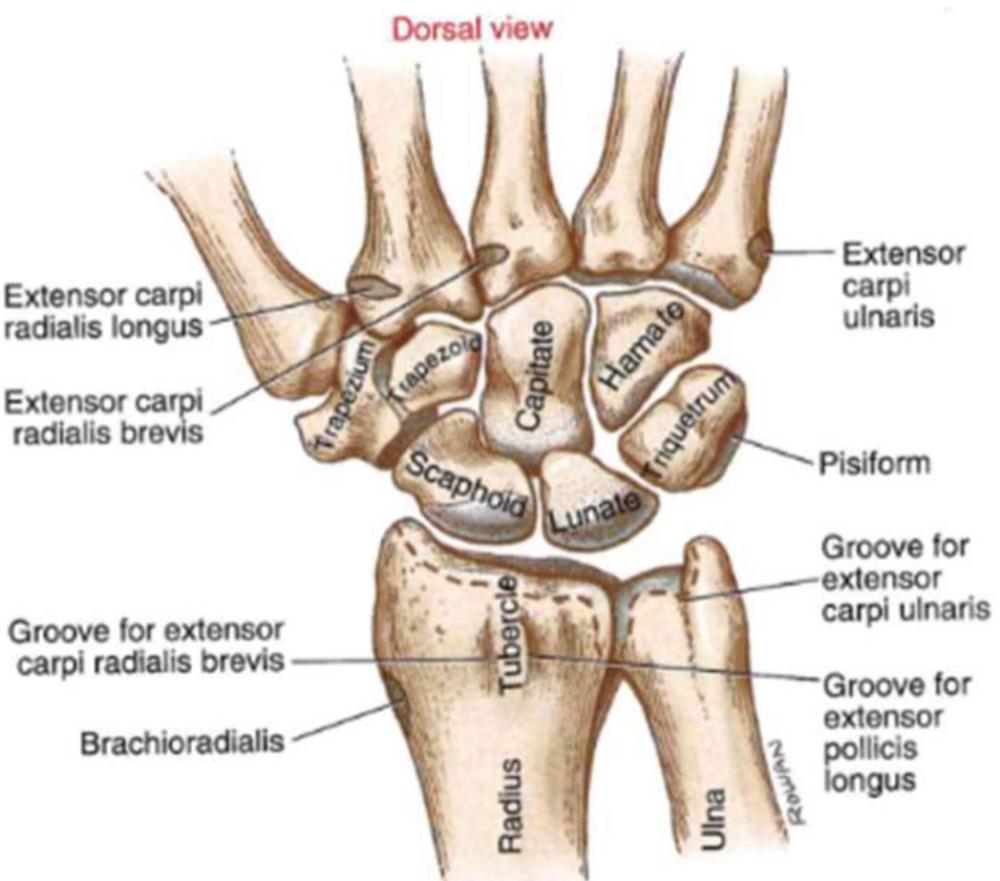
- several grooves & raised areas that stabilize tendons coursing to the wrist/hand
- Example: Dorsal(Lister’s)Tubercle => separates the ECRB from the EPL
Osteology: Distal Forearm
PALMAR
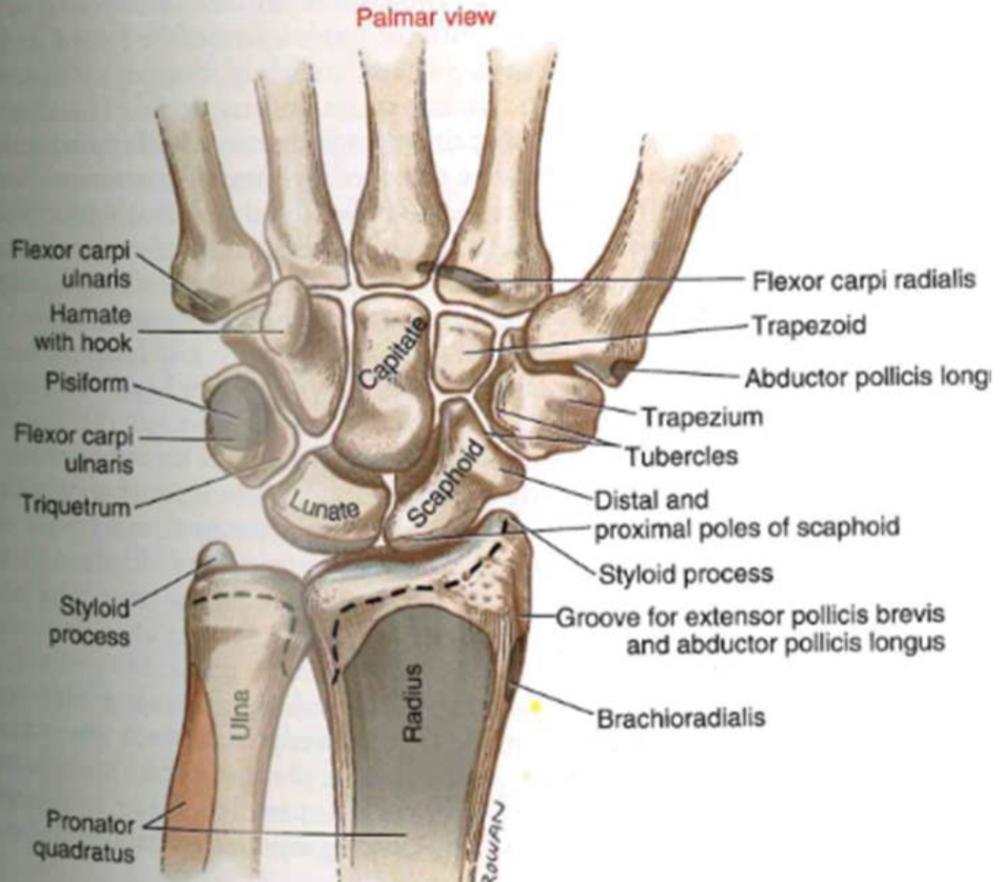
- Proximal attachments of wrist capsule & thick palmar radiocarpal ligaments
Osteology: Distal Forearm
• distal articular surface of the radius
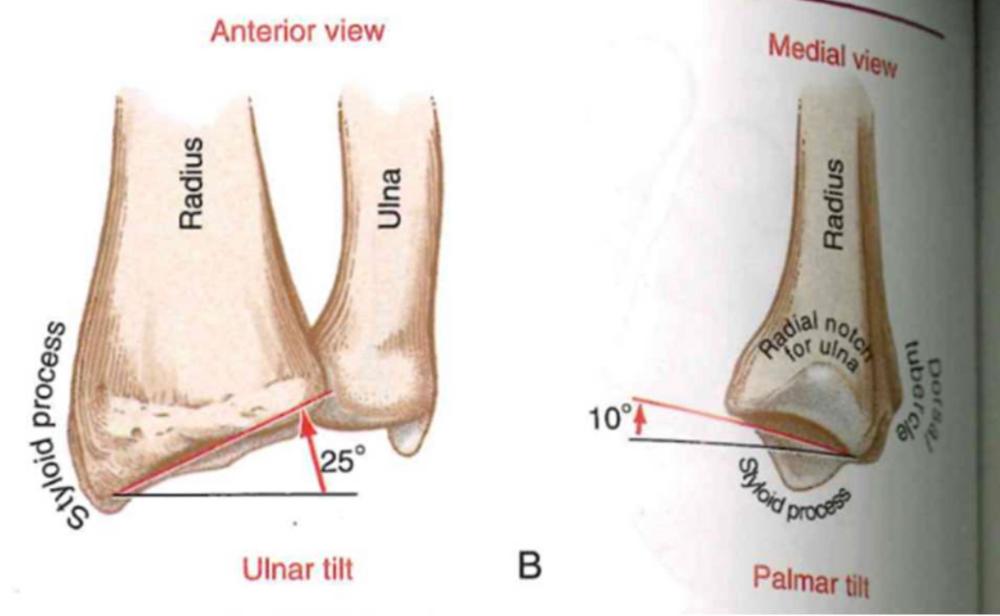
- concave in both ML & AP directions
-
Two important boney configurations
• Medial (ulnar) angulation of ~25 degrees = “ulnar tilt”
• Palmar angulation of ~10 degrees = “palmar tilt” - ulnar deviation & flexion > radial & extension
Osteology: Carpal Bones (proximal)
- scaphoid, lunate, triquetrum, pisiform
- Joined “loosely”
Osteology: Carpal Bones (distal)
- Bound tightly = stable base for articulation with metacarpal bones
- trapezium, trapezoid, capitate, hamate
Osteology Proximal Bones: scaphoid
- Most fractured
- • Greek for “boat duetoit’sdistalroundedsurface(likeahull)
- Has a tubercle
- Articulateswithbothproximal&distalrow
- Scapholunateligamentisimportant;morelater
Osteology Proximal Bones: Lunate
- most instable; 2nd most fractured
- Latinfor“moon”
Osteology Proximal Bones: Triquetrum
- 3rd most fractured! • “triangle bone
- Easily palpated with radial deviation
Osteology Proximal Bones: Pisiform
- shaped like pea
- EmbeddedwithinthetendonofFCU;sesamoid bone
- Attachmentforotherligaments
- Easytopalpate!
Osteology Distal Bones: capitate
- largest of all carpals
- Latin for “head”
- Stable anchor at the base of the third metacarpal = longitudinal stability of hand; axis for all wrist motion
Osteology Distal Bones: Trapezium
- Articulates with thumb; saddle joint.
- Has a tubercle
- Along with tubercle of scaphoid; serves as attachment point for transverse carpal ligament
Osteology Distal Bones: trapezoid
Nothing to notes
Osteology Distal Bones: hamate
- Articulates with base of 4th & 5th = allows for cupping
motion of hand
• Has a hook = medial attachment for the transverse carpal ligament!
Osteology: The carpal tunnel
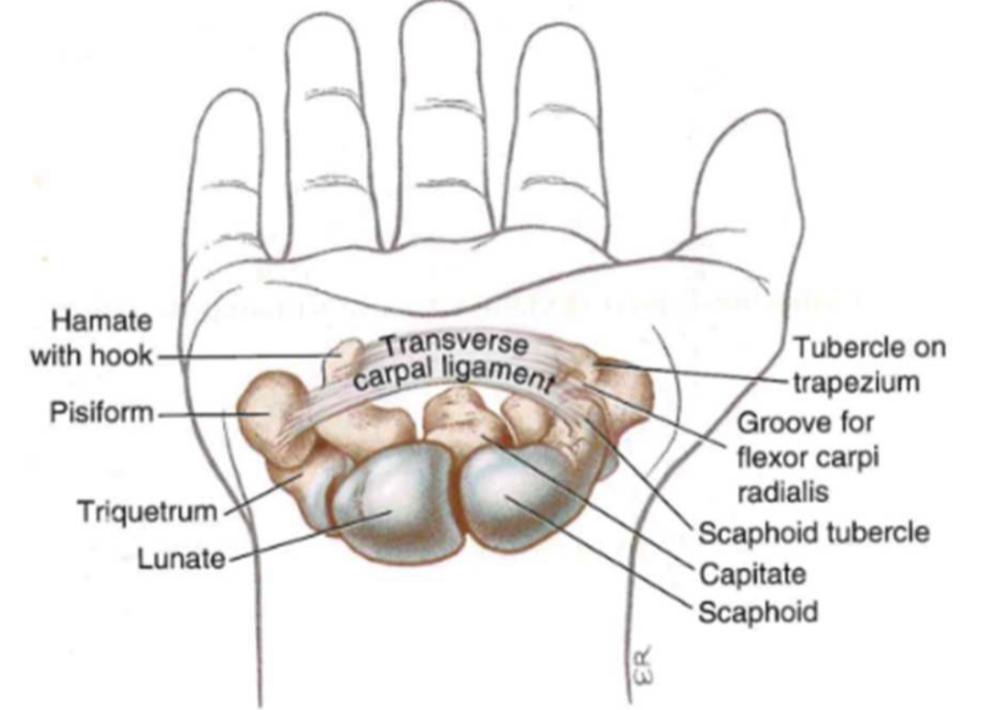
- Thick band = transverse carpal ligament
- Palmar cavity made by carpal bones and transverse CL
- Restrains enclosed tendons from springing out (anteriorly)
Arthrology: Radiocarpal
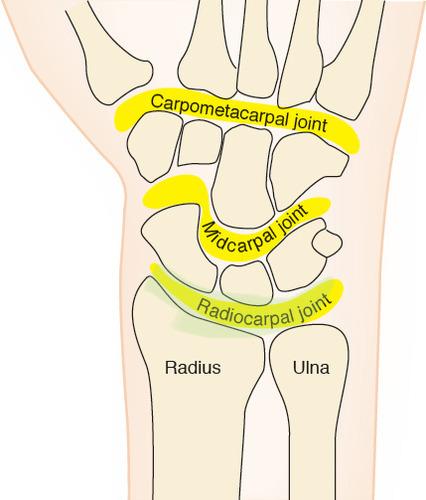
Between ulnar+radius and triquerium+lunate+scaphoid
Arthrology: Midcarpal
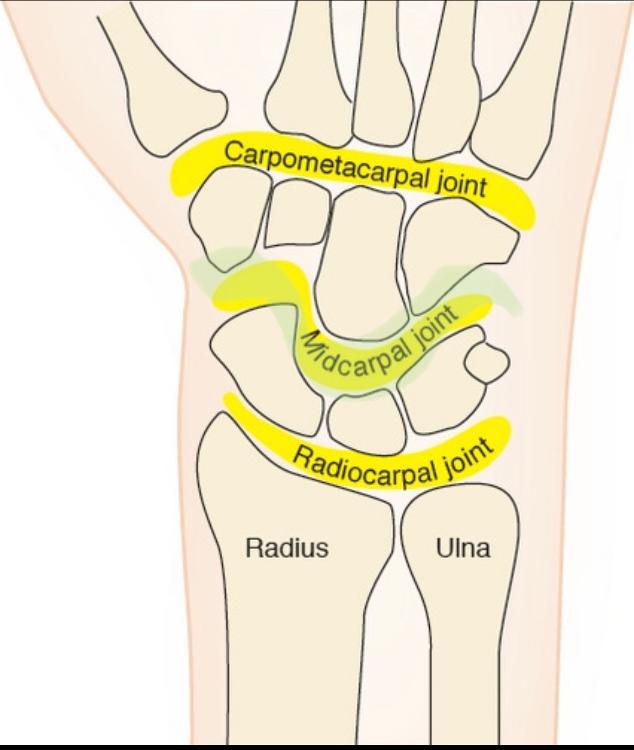
Between finger bones and hamate+capitate+trapezoid+trapezium
Arthrology: Intercarpal
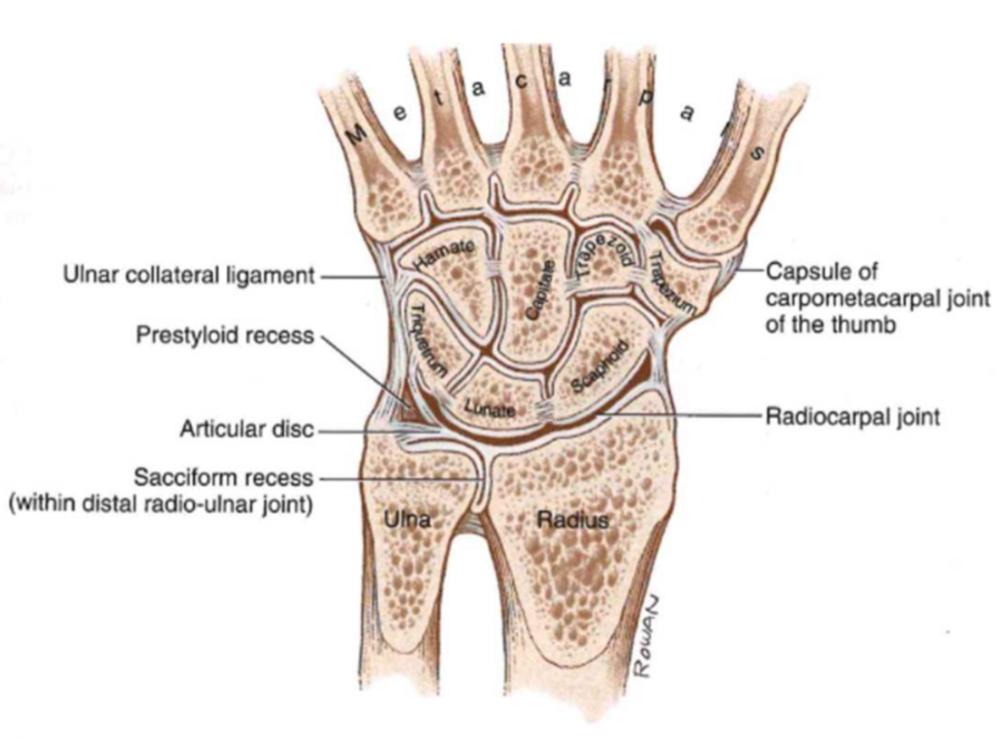
- synovial plane joints that connect the carpal bones
- 3 sets/rows of joints
Arthrology: Intercarpal (ligaments)
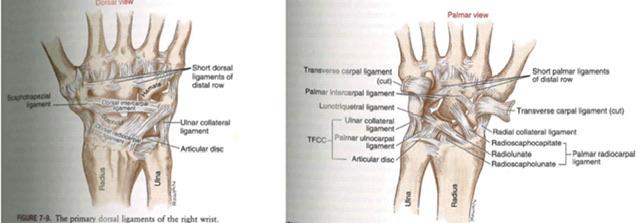
Arthrology: Intercarpal (extrinsic ligaments)
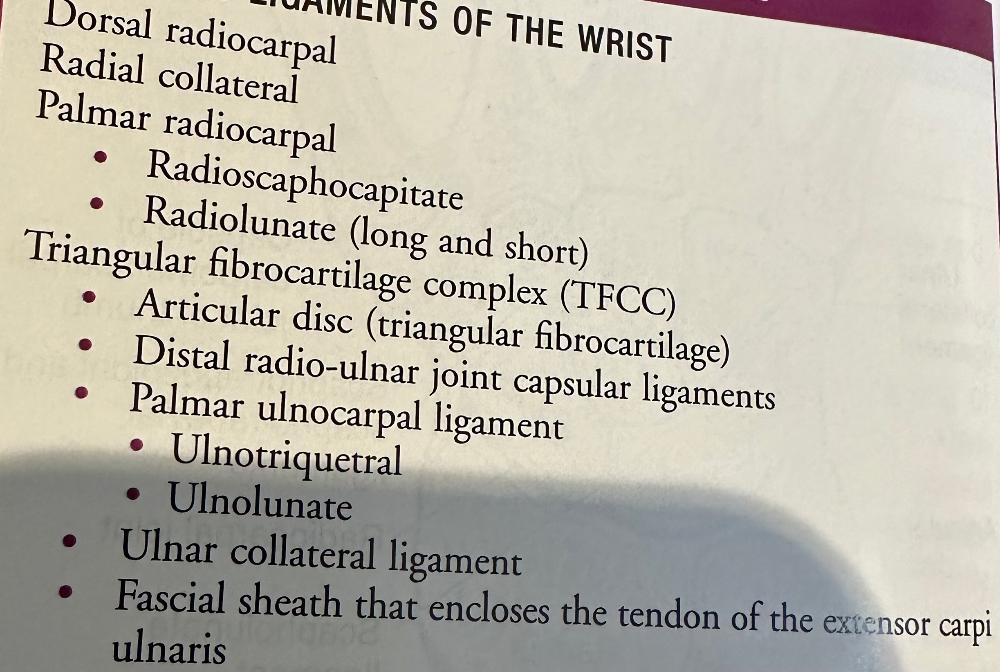
Arthrology: Intercarpal (intrinsic ligaments)
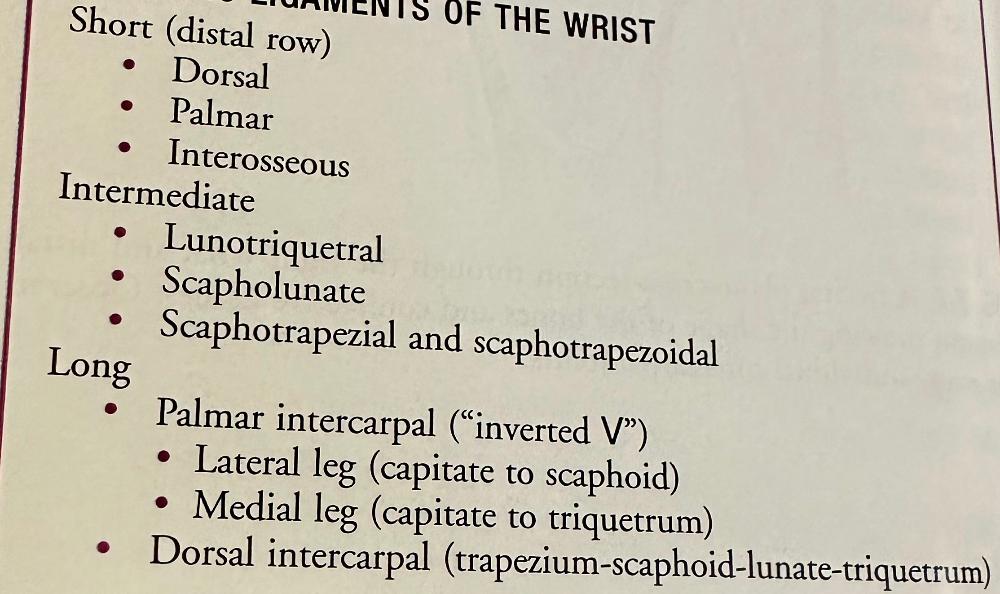
Osteokinematics
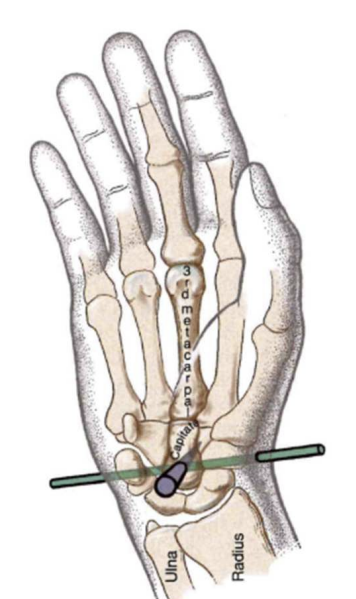
- 40 flexion
- 40 extension
- 10 radial deviation
- 30 ulnar deviation
Arthrokinematics: flexion + extension (limp+back wrist)
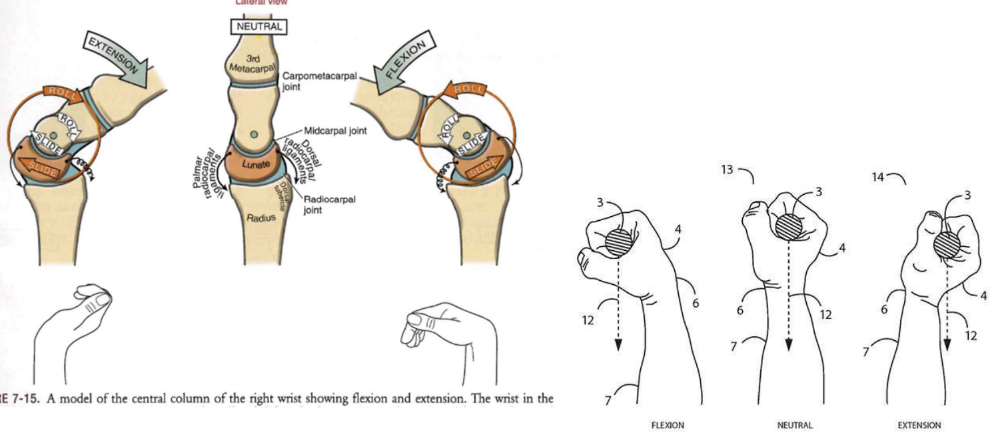
- ROLL + SLIDE = same direction
- concave + convex
- limp wrist forward (extension) OPPOSITE with flexion
- dorsal radiocarpal ligaments slacken + parlmar RC lig is tight
Arthrokinematics: ulnar + radial deviation
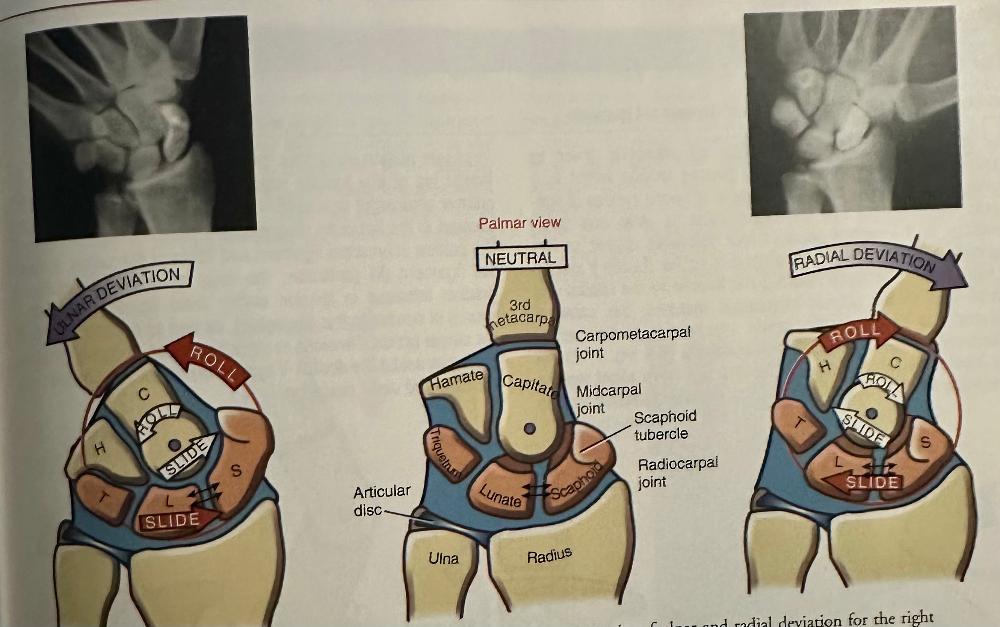
- roll + slide = same direction of deviation
- concave-convex
- waving motion
"Double V" ligaments with ulnar+radial deviation
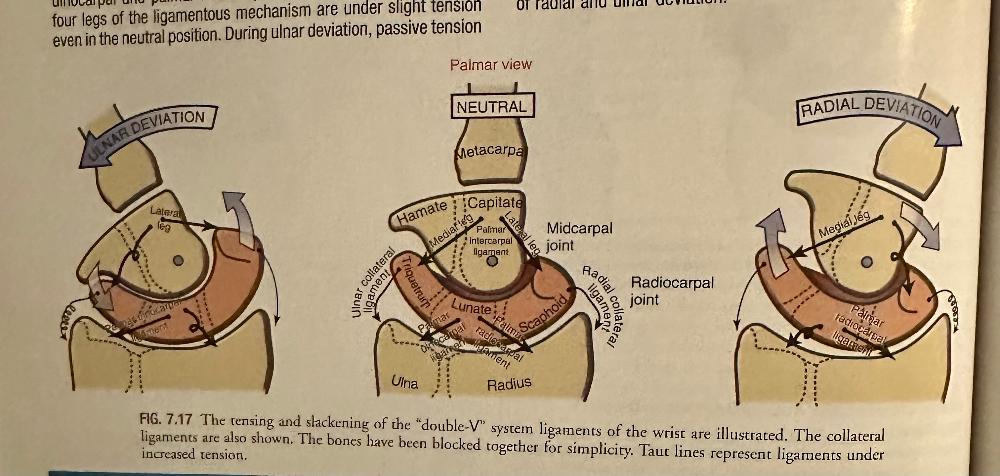
- Upper V shape = medial + lateral of palmar intercarpal ligament
- Lower V shape = palmar ulnocarpal+ palmar radiocarpal ligaments
Primary Muscular Actions
attach distally within the carpus; act on the wrist only
Secondary Muscular Actions
cross the carpus and attach to the digits = act on wrists & hand
Muscular actions map
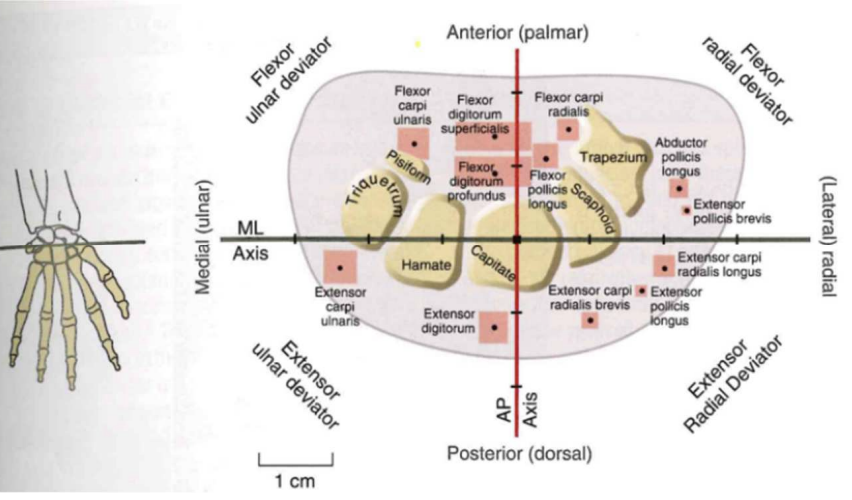
Muscular Actions: Wrist Extensors Muscles
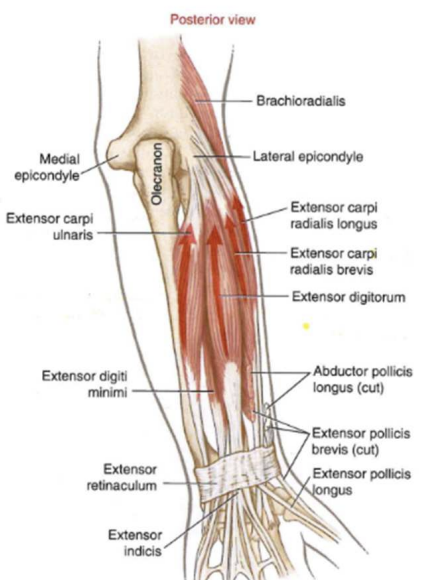
- Extensor Carpi Radialis Longus
- Extensor Carpi Radialis Brevis
- Extensor Carpi Ulnaris
- (Extensor digitorum // finger extension + torque at wrist)
- Extrinsic finger extensors
Muscular Actions: Wrist Extensors in action
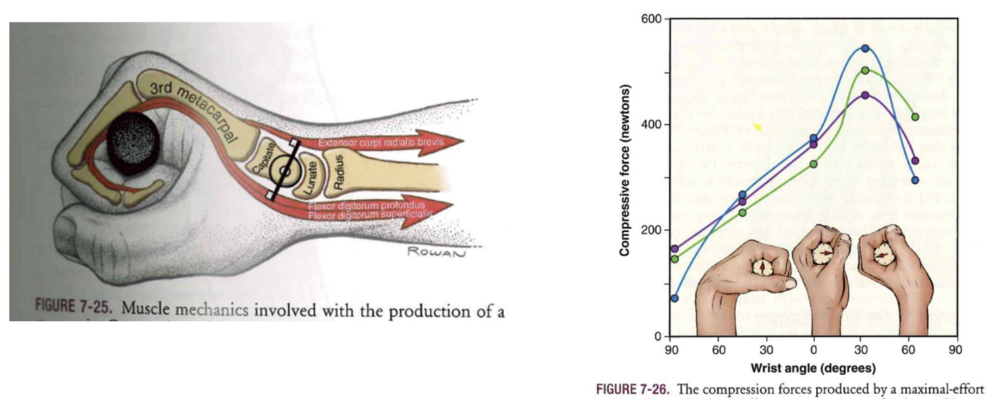
- extrinsic finger flexors contract (Fl. digit.sup+ profundus) and fex fingers but creates wrist flexion torque
- carpi radialis brevis BLOCK wrist flexion tendency (caused by finger flexor muscles)
- => wrist extensor maintains good length+flex fingers better
Muscular Actions: Wrist Flexors muscles
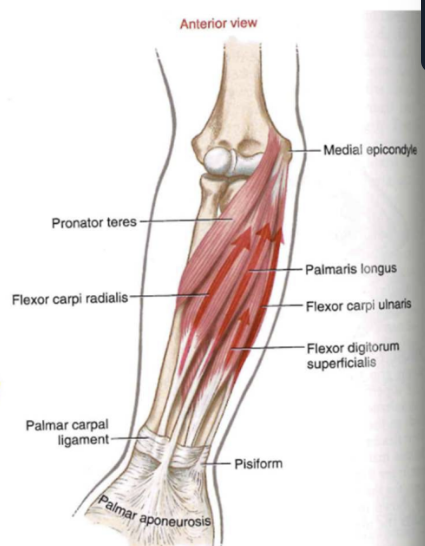
- Flexor Carpi Radialis
- Flexor Carpi Ulnaris
- Palmaris Longus
- Absent in 10-15% of people
- (Extrinsic finger flexors): produce more torque than wrist muscles, depending on wrist position
RIGHT CARPAL TUNNEL: Cross sectional area, position, and length of moment arms (muscles that cross wrist @capitate head level)
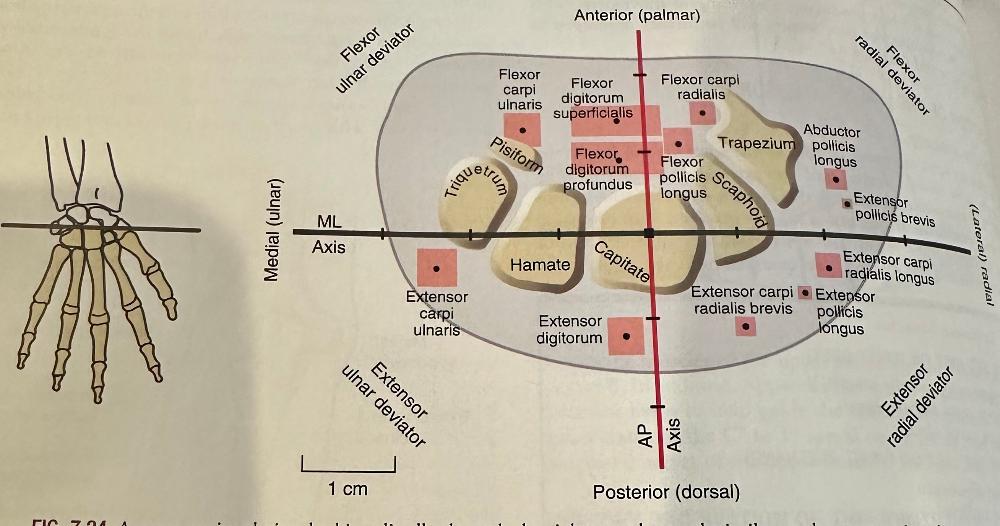
- each muscle's moment arm for a particular action is equal to the perpendicular distance between the axis and the muscle tendon's position
Muscular Action: Radial Deviations
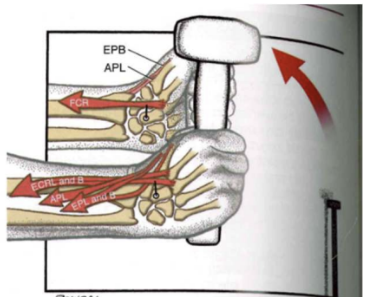
- 15% more torque than ulnar
- Extensor carpi radialis brevis+Longus (ECRB & ECRL)
- extensor pollicis longus + brevis (EPL & EPB)
- flexor carpi radialis (FCR)
- abductor pollicus longus (AbPL)
- flexor pollicis longus (FPL)
Muscular Action: Ulnar Deviations
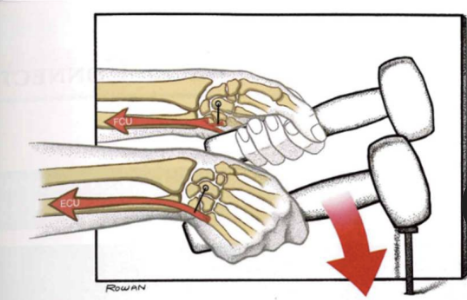
- extensor carpi ulnaris (ECU)
- flexor digitorum profundus and superficialis (FDP & FDS)
- extensor digitorum (ExDigi)